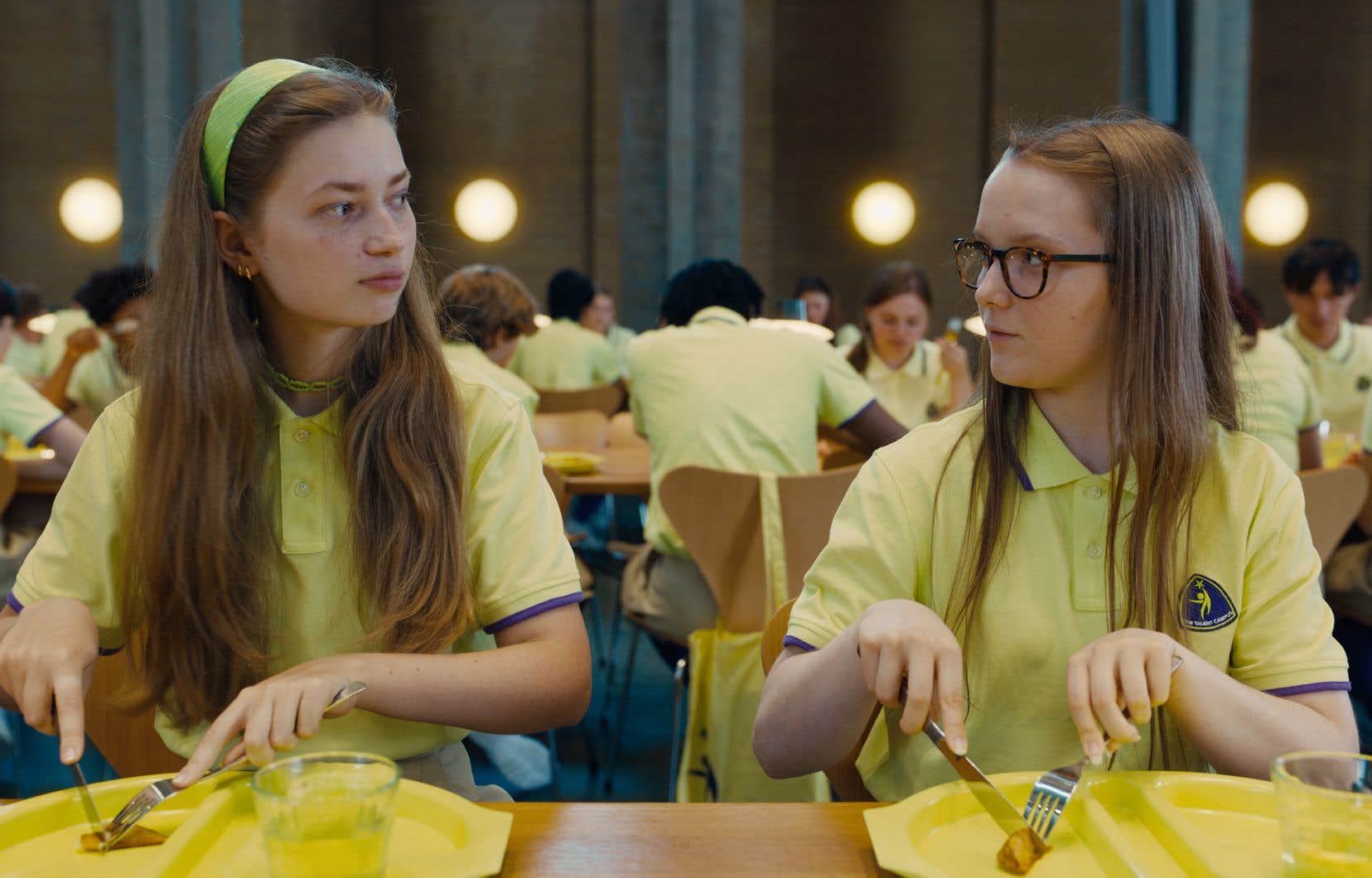In a private school that likes to make much of its avant-gardism, one day arrives Miss Novak, a new teacher responsible for instructing the students in nutrition. However, the young woman has radical ideas on the subject, to say the least. Beneath her apparent benevolence, Miss Novak is more of a guru than a teacher. Soon, the small group she has enticed comes to reject food in all its forms. Directed and co-written by Jessica Hausner, Club Zero is the kind of feature film that frustrates.
The film opens with a “trauma warning” about eating disorders. Terms like “bulimia” and “anorexia” will however never be used even if, in fact, Miss Novak encourages her flock to become anorexic.
This detail may seem anecdotal, but looking at the film as a whole, it turns out to be symptomatic of a rather vague approach.
The plot is clearly inspired by the German tale The Pied Piper of Hamelin, in which a mysterious troubadour flees with the children of an entire town after the local notables refuse to pay him, even though he rid them of a colony of rats. The moral being that it is first and foremost the children who pay for the deceitfulness of the powerful.
Not in this variation. Thus, after having chosen religion as a backdrop in Lourdesthe love passion in Crazy Love and the pharmaceutical industry in Little Joe, Jessica Hausner has set her sights on education. Both educational establishments, depicted as strongholds of indoctrination, and parents, presented as caricatures of blindness, will be put through the mill (with the exception of a single mother, a rare adult to find favor in the eyes of the filmmaker). .
The goal of the exercise? It is not clear: we are talking in particular about ecoanxiety, but the link remains vague.
Satirical accents
Nevertheless, some good questions are raised. For example: do we now live in a world where any belief, as long as it is professed with conviction, takes on the value of truth? In this regard, Mia Wasikowska displays a terrifying serenity as the prophetess of “zero food”.
The sectarian drift is relentlessly modulated, but the film is bathed in such an artificiality that it creates a distance rather than a proximity with respect to the drama in progress. The direction of the actors, which forces them to deliver their lines in a fixed tone, does not help.
Often, formal stylization prevails over the psychology of the characters. This is true for adult scores, but also for adolescent scores.
Despite all this, a bond of empathy is formed with the young protagonists in distress without their knowledge. In this context, the satirical, even sardonic, accents disconcert more than they make you smile.
Indeed, the spectacle of these adolescents who let themselves die slowly while believing they are living better is painful, regardless of the second degree of cinematic coating. Moreover, the ending, in line with the tale, but accompanied by a distinct epilogue, proves to be borderline cynical enough. This, without a bad pun, leaves a very unpleasant aftertaste.
